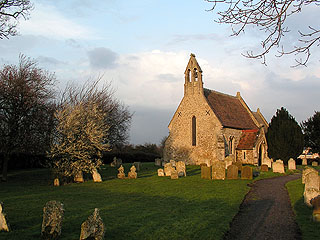The Hundred Foot Washes are the low land lying between the New and Old Bedford Rivers, the main connections in the great drainage system of the Fens. They are about a hundred metres wide, and thirty miles long, stretching from Earith in the south to Devner Sluice near Downham Market in the north.
The two rivers are totally straight, and only three roads cross the washes, which are often allowed to flood during the winter to take pressure off the rest of the river system. The wetland created is home to thousands of wading birds. It's an odd landscape this: one is simultaneously awed by the achievement of Vermuyden and his successors in draining the fens, and perilously aware of just how tiny human life is in this landscape of rivers, and black soil, and sky.
The A142 from Ely to Chatteris crosses the washes on a great concrete viaduct, raised above all but the worst floods. Just to the east of this road (which is perpetually busy, and apparently one of the most dangerous in the country) is the little village of Mepal, and right on the northern edge of the village is the church of St Mary.
The church of St Mary sits in a pleasant little churchyard on the northern edge of the village, with the thundering traffic just to the west, and the great banks of the New Bedford River a stone's throw to the north. We first visited in spring, and just about everything was in blossom: cherry, almond, and perhaps even a Glastonbury Thorn. Later, in summer, we were struck by the numerous fine oak and lime trees in the surrounding fields. The Fens are a famously desolate place for tree-lovers, so an oasis like this is very welcome.
The exterior of the tiny building doesn’t look especially promising, alas – it’s really not much more than a chapel. There is no tower, just a little bell-cote on the west wall. Everything looks very new, except for the chancel: the core of the building dates from the early fourteenth century, but successive restorations in 1849, 1876 and 1905 have stripped away almost everything old.
On the first visit we weren’t able to get inside, for there were no keyholders listed. Later in the summer, however, we were at nearby Sutton whose vicar (responsible for Mepal) gave us the details of a keyholder. We intended just to pop in and out rather briefly, but found more to detain us than we’d expected. Although thoroughly scrubbed through several restorations, the interior does feel ancient despite a new roof and windows and lots of new fittings - including a rather scary carving of Mary in dark wood mounted on the north wall. However, the true age of the building is evident in the slope of the walls, and the way thin lancets cut deeply through their great thickness. The chancel end has a nice plain piscina, and some shallow fourteenth century niches on either side of the east window decorated with ogeed canopies above. So, there’s nothing spectacular here, but it’s a pleasant little church nonetheless.
Walking back to the keyholder’s house, we passed through a field, with the oaks full of rooks singing discordant evensong. We stopped and chatted to her for a little while, admiring her beautiful garden and her mischievous cats. She told us about a monument that I had missed in the chancel, which commemorates a vicar and his son, the latter of whom died in the Gulf of Mexico during a tropical storm. Then, we left her to make her tea, and walked back along the path to the Pickerel, where we sat and had a contented pint looking over the river before returning through the summer air to Cambridge.
St Mary is kept locked, and had no keyholders listed when we visited, but do ask in Sutton.

